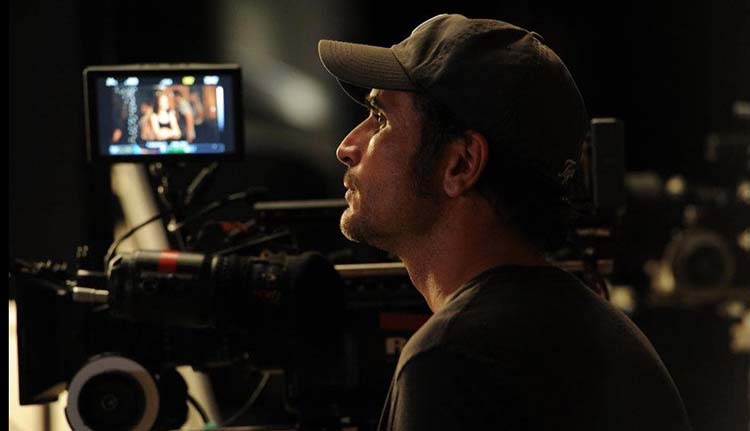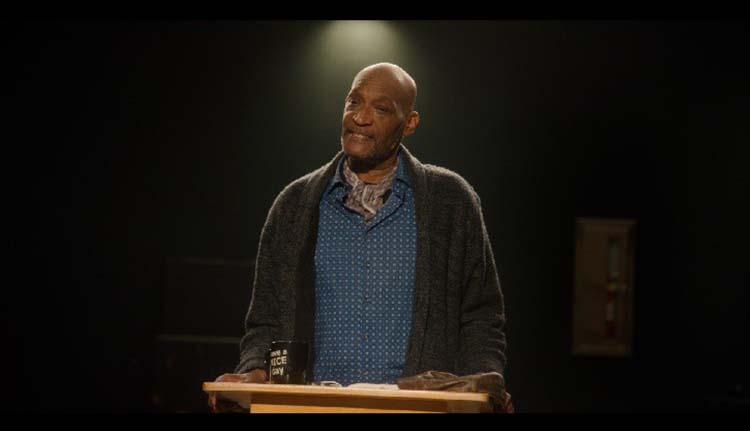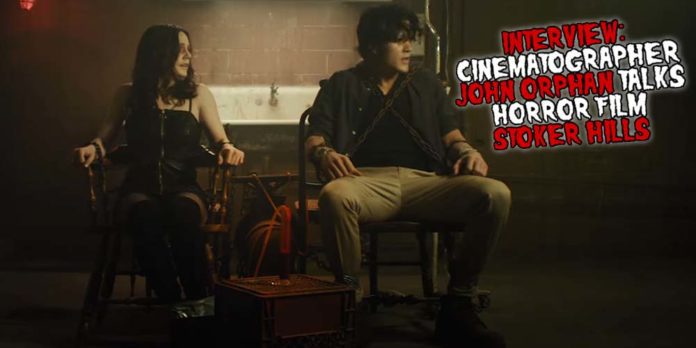There’s something sinister happening in Stoker Hills, the new horror film from director Benjamin Louis (State’s Evidence) that’s one part found footage frights and equal part noir detective procedural.
Stoker Hills begins with several film students who are making their thesis project. Horror fans will recognize Professor Smith as acting legend Tony Todd. As the burgeoning film crew is at work at night on the street, Erica (Steffani Brass) is taken by a hooded figure. The remaining students, Ryan (David Gridley) and Jake (Vince Hill-Bedford), try to survive the ensuring chaos as the hooded figure torments them too. Their experience is captured by their video equipment and investigated by Detectives Adams (Eric Etebari) and Stafford (William Lee Scott).
PopAxiom spoke with cinematographer John Orphan about becoming a director of photography, his artistic instincts, and making Stoker Hills.

What If
John begins in a place where a lot of creative minds start. “I loved movies my whole life, but I didn’t think it was possible …” Growing up in Grand Rapids, Michigan, John lived in a mindset “where you grow up and get a job, and you don’t pursue the arts.”
“I was interested in photography as a hobby. I’d do it on the side for fun,” John shares that the passion for cinematography was alive inside. However, everything changed when he “worked as a PA. That’s when I saw what the cinematographer was doing and thought, ‘that’s what I want to do.’
Despite the upbringing nudging him toward something more practical, John’s PA experience provided a realization. “I had to do this because I didn’t want to get old and think ‘what if.'”
About Stoker Hills
John doesn’t recall how he came into Ben’s radar. But remembers, “We talked about influences.” Up until that point, John says, “I’d been doing a lot of commercial work which doesn’t lend itself to making the kind of stuff I want to make. So, when they called about making a dark, moody horror movie, I said’ absolutely.'”
“We talked about the two things going on,” he says about pre-production. “There are the detectives, and we’d shoot in a more traditional cinematic style. Then there’s the kid’s point of view that uses their equipment as found footage.”
The two perspectives mean the film draws from different influences. “From the detective’s point of view, we were probably leaning real hard on the Fincher’s Seven.” But for the found footage stuff, he says, “Ben loved the look of a movie called Honey, so that’s the color and saturation look we went for with the kids’ footage.”

Dark
Though the film has two distinct looks, John explains, “We shot it all on the RED Weapon 6k. It’s a big camera with big lenses.” To achieve the different looks, “we messed around with it more in post to make it look dirtier.” However, a handful of moments when another camera is at work, “There’s some running footage where we’d grab a DSLR.”
Balancing the look of the film required careful planning. “We did a bunch of test shots in advance. Then, we got in a studio for a day and tried different lighting schemes that we knew would happen. From there, we decided which one works best and based the colors on that.” Planning requires good execution from the team. “Our colorist Dan Edwards at Changing Frames did an amazing job.”
“The first pass of the movie was probably twice as dark and scary as it is now,” he says of a cut that was considered too intense. However, the film didn’t shed too much of its darkness. In one scene, “There’s a surplus of bodies in a room. So we used actual people; covered them in blood and mixed them in with prop body parts.”
Those near-naked actors spent a lot of time on concrete floors in a cold room. For John, “It was arresting to walk into that room to shoot because it looks so real to the eye. That was my favorite stuff to shoot.”
Wrapping Up
“Coming up, I was into Roger Deakins (Blade Runner 2049), which I’m sure a lot of people say the same or Emanuel Lubeszki (Saving Private Ryan),” he answers about influences. “Another guy I think is a master is Robert Richardson (A Few Good Men, Once Upon A Time In Hollywood). I’ve learned a lot from studying his work. My favorites of the newer guys are Bradford Young (Arrival) and Greg Fraser (Dune).”
John’s a big fan of horror and “dark thriller kind of stuff. The things we did with the detectives [in Stoker Hills) if I could make a career out of doing that, I would be happy.”
“I think it’s what naturally comes out of me,” he says about this ‘dark side.’ “It’s strange. I’m a happy person, I love to laugh, most of my friends are standup comedians. But artistically, what comes out of me is this darkness. It’s the kind of visual art that excites me. That’s the kind of world I love.”
Stoker Hills is available on Amazon and other on-demand services. So what’s next for John? “I just finished another horror movie filmed in Montana called For the Night. After that, I’ll be doing another dark thriller called Reap/Sow in my hometown.”
Is Stoker Hill on your watch list?
Thanks to John Orphan and Projection PR
for making this interview possible.
Find more interviews from Ruben R. Diaz!


